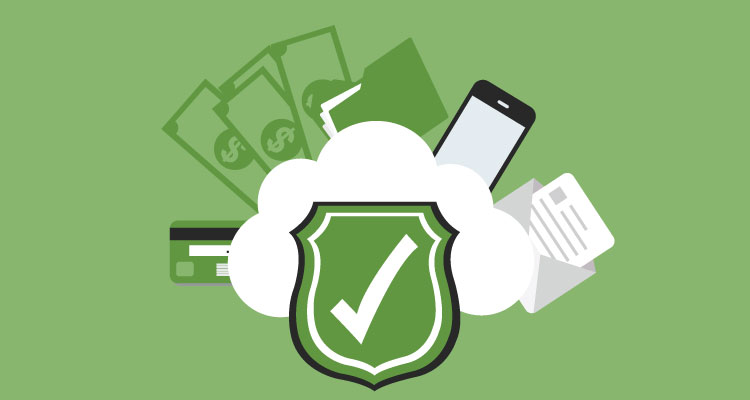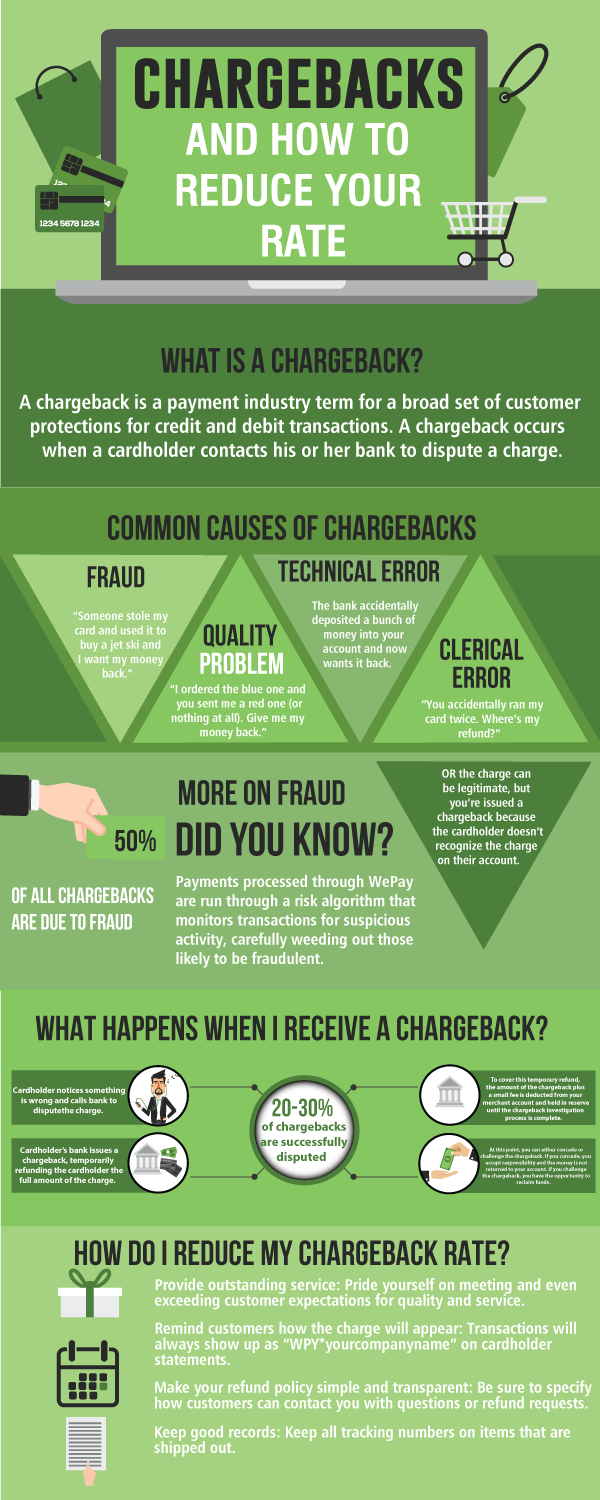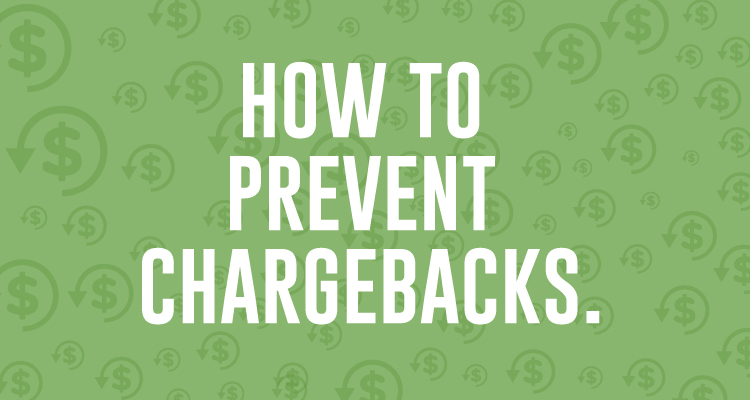Debit and Credit Cards
If you accept debit and credit cards as a payment option, then you may already be aware of chargebacks. According to many, they seem to be on the rise, which can be costly for your bottom line. That’s why we created this infographic to help you better understand what chargebacks are, why they are on the rise, and what you can do to minimize them in your business. Significant loss of revenue is common as 20-30% of all disputed transactions are successful.
If you don’t know about chargebacks, it refers to a set of protections for credit card and debit card transactions. A chargeback is enacted when a cardholder disputes a charge on their card statement.
The most common causes for a chargeback are fraud. In fact, 50% of all chargebacks are now due to fraud. The other causes of chargebacks involve technical and clerical errors. An inadvertent charge will cause this; or there was an issue with the quality or receipt of the merchandise. Often, cardholders may not even recognize a charge that shows up on their card statement so want it removed.

Chargebacks
The chargeback process starts with the cardholder contacting their bank; or card issuer company to let them know they dispute a specific transaction. They will be asked why and then will receive a temporary refund for the charge to their account while the bank or card issuer investigates. This starts the chargeback process in motion. While it is being investigated, the retailer or merchant will be hit with the chargeback. The chargeback is the total of the merchandise and transaction on the statement plus fees, which are deducted from the retailer’s merchant account. Once the investigation is complete and it turns out that the ebank or card issuer rules in the favor of the cardholder, the retailer may have even more fees that are deducted from their merchant account plus the loss of merchandise and sale.
Reduce Chargebacks
However, there are ways to reduce chargebacks, including addressing all potential cases of fraud. Be sure to work with a merchant account if possible. They typically can provide technology to monitor transactions. For example, risk algorithms can identify any suspicious activity among transactions to stop it in its tracks. Other ways to reduce chargebacks include providing great customer service and delivering quality products and experiences to the customer. Plus, it helps to be clear in how you identify yourself on a cardholder statement and also let the customer know at check out how it will appear on their statement. Be sure to clearly spell out your name on the statement plus include a contact phone number in case they still aren’t sure.
Another way to lower your chances of chargebacks is to state your refund policy in a simple and transparent way throughout your website and the actual checkout process. You may even want to include it on any email receipt you send to them after the transaction is complete. Finally, be sure to keep good records that include tracking numbers on the packages that you have shipped out. It also helps to share that tracking information with your customers so they can see where and when their purchases will arrive.
For more information on chargebacks, download our chargeback infographic below.















